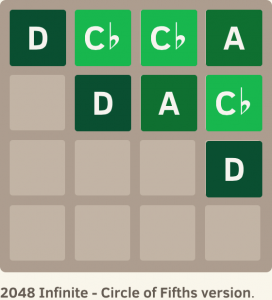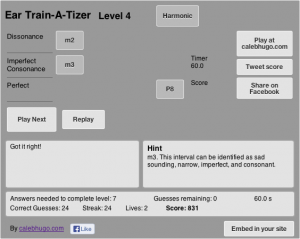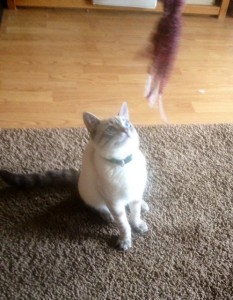
The trouble with implementing the sounds in “2048 Infinite – The Circle of Fifths” is that the circle of fifths is a natural tone row. Nothing against tone rows, but it’s not necessarily something people want to hear the entire time they are playing a game. Therefore, it wasn’t a simple matter of having an octave of available sounds to play when the tiles merge. There had to be a logical organization in the orchestration of the chords being formed in order to be palatable to a wide audience. Using some music theory, we found that the solution was to change the bass depending what range of notes the game needed to use.
The way that 2048 Infinite had to be adapted from the original 2048 necessitated that no more than 10 of the 12 different keys be on the board at a time. By the time the player finishes the first circle, there are up to 6 keys displayed. This means that in order for the game to make sounds, it might have to play an F and an F-sharp at the same time without logical tonal harmonic support. Unless, of course, you change the bass note to something the tonicizes the pitch necessary to maintain the impression that a tonal scale is being used.
Using Music Theory to “Set the Mode”
As popular as the Ionian (major) scale is, it’s on the edge of the spectrum when it comes to tension in the church modes. Without a composer asserting his/her total control over it, it can sound sloppy. In the hands of a computer using an algorithm, it can be quite unruly without needlessly complicated logic. The better choice was to tonicize the music using the Aeolian (minor) mode. In 2048 terms, to make the 16 tile the root of the chord.
But why stop there? We then changed that sound to strings to make the music more interesting. But then the bass sounded too exposed, so we let a few other random sounds be strings too.
And that’s how you use music theory to make a tone row tonal.




